The CICO diet is really nothing but one simple rule. It’s so straightforward that you don’t hear much about it. It gets drowned out by all the fad diets with complicated rules and extra products you have to buy. But you don’t need any of that to lose weight. You just need CICO.
CICO = Calories In < Calories Out
CICO stands for “Calories In, Calories Out.” Calories coming in must be less than calories going out. If you follow this rule, you will lose weight. In fact, it is impossible not to.
Every day, you burn calories. If you are very active, you burn a lot, but even if you barely move, calories are going out. If the calories coming in through the food you eat are exactly equal to the calories you burn, then your weight will stay the same. If they are just slightly over, then you will gain weight. If they are just slightly under, you will lose weight. Most people gain unwanted weight because they are eating just a tiny bit more than they should, every day. Tip that balance to eating just slightly less than the calories you burn, and you will lose weight. Once you start counting calories, you may be surprised how small of a change you need to make to start getting skinnier.
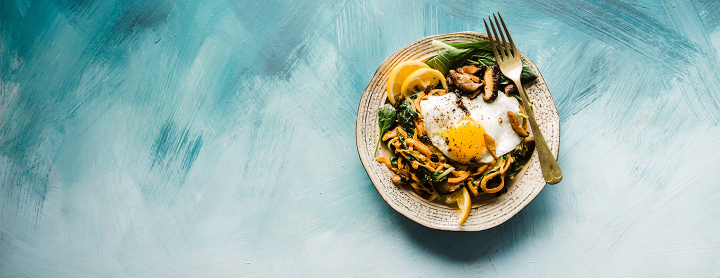
Dieting Step Zero
Step zero is to count the calories in what you actually eat. Don’t even try to restrict yourself. Just eat whatever you would normally eat, but make the commitment to record the calories you consume. Take a moment to think about that step. Note that there are no limitations on anything you eat. You just have to be honest with yourself and make a record of what you eat. Can you do that? Honestly, if you can’t do that, this method won’t work. That’s why it’s step zero. You are not taking any actual action but simply gathering the facts. This is similar to getting your financial house in order: step zero is recording what you earn and spend. If you can do that, you may find that everything else falls into place. The simple act of recording the calories you consume makes you a more conscious eater. Even though you are not trying to restrict your intake at this step, you may find yourself doing so anyway. You will be conscious of your ideal daily calorie limit, so you may find yourself making a different snack choice when you are close to that cap.
Calorie Counting
There are many computer, web, and smartphone applications you can use to count calories. Cronometer and MyFitnessPal are two examples. An app can make things easier because you can rely on the calorie counts for particular foods that other users have shared, or use your smartphone’s camera to scan UPC codes on products, providing you with an instant calorie count. But you don’t need fancy technology. A notebook and pencil will work just as well. The important thing is to record everything you eat. Many restaurants provide calorie counts on their menus, and if they don’t, you can write down what you ate and figure out the calories later. You will need to know what your calorie limit is based on your height, weight, age, gender, activity level, and the amount of weight you want to lose. The apps linked above will calculate this for you, or you can use this online calorie calculator. At first, you will look up the calories for every food you eat. For meals, you will count up the calories in every ingredient to figure out the total. Some foods will likely surprise you with how many or how few calories they actually contain. Over time, you will start to internalize the calorie count. You’ll have a list of your favorite meals and you’ll know exactly how many calories they contain, and for new meals you will be able to estimate the calorie count quickly and accurately.
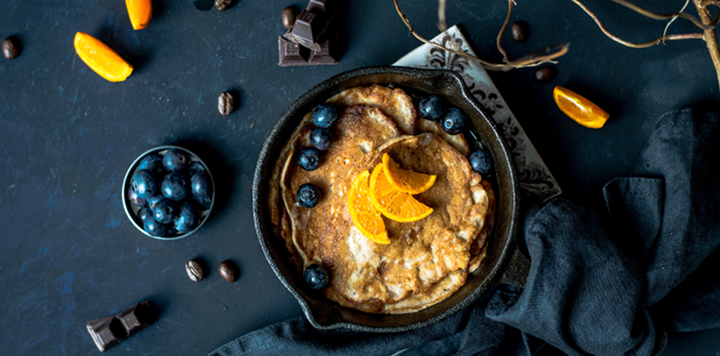
Start Small
Diets often fail because they seem too hard. Willpower is a limited resource. Don’t set yourself up with dieting as a monumental task, only to give up when you encounter a minor obstacle, and binge on junk food. Set a realistic goal and stick to the program. You will still be able to eat all your favorite foods as long as you stay within your limits. When I started with step zero of simply committing to counting the calories in everything I ate, I was surprised to find that even when I ate whatever I wanted all day long, after dinner I was still under my calorie limit by about 100 calories, nearly every single day. So how had I gained so much weight? Just by having dessert or a midnight snack, which would put me just slightly over the limit. Once I had this information and I could see that I was so close to staying on course, I found it wasn’t too hard to just have an apple as a midnight snack instead. After all, I hadn’t altered my diet at all during the day, so I could make this one change. It was enough.
Gamify Your Diet
You can turn dieting into a game. Games and sports are fun in part because it can be enjoyable to work toward a goal. One advantage of using an app to count calories is that many apps take advantage of your natural feeling of wanting to win by turning calorie counting into a game. As you enter your calories, as long as you stay under the limit, your number stays green. Go over, and you’re in the red. As with any game, beginners should start in easy mode. Assume you will be sedentary and you want to lose one pound per week. Feel free to do this for a long, long time. The idea with CICO is to commit to a way of eating that you can live with in the long term. When you’re ready, for a confidence boost you can try “beast mode”: run a major calorie deficit every day and you can lose 2 pounds a week. Don’t try to lose more than that without consulting with a doctor first. You can set goals for yourself in a spreadsheet or just a piece of paper. Write down your expected weight loss at the end of each week, and then fill in your actual weight loss each Friday morning. Keeping in mind the goal you are working toward at the end of a few months is a great motivator, and seeing your actual progress helps keep you on track.
Change How You Think About Hunger
Real hunger is a terrible thing. But the hunger you feel from skipping a meal or sticking to your calorie goal is not real hunger. It can feel unpleasant, but you can change the way you think about it. The feeling can be similar to exercise. Running or lifting weights might feel unpleasant at first, but you can learn to like the feeling, in part because you know you’re reaching your goals. Mild hunger can be the same way. You can associate every stomach grumble with losing weight. When you feel hunger pangs, think, “Yes, it’s working.” On the other hand, there is really no need to go hungry. When you surround yourself with low-calorie snacks, you can always have something to eat when you want to.
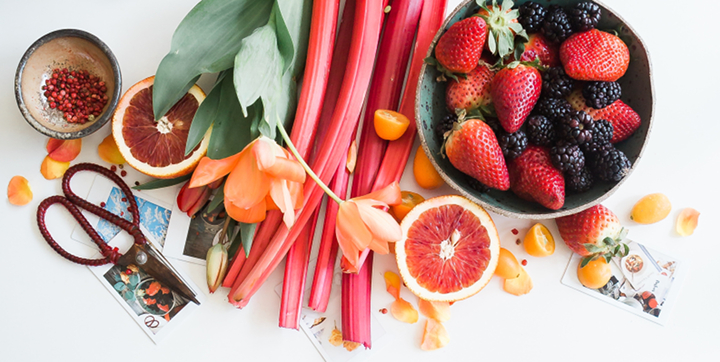
Fruits and Vegetables
If you’re not hungry for an apple, you’re not really hungry. Fruit is your release valve. If you really want to eat something, you can always allow yourself to eat a piece of fruit. And if what you actually want is to eat ice cream, you can do it, but just make yourself eat an apple first. That way you take away the hunger and you’re just left with your desire for something sweet, so you’ll eat less ice cream. Sometimes it can be frustrating to eat a small meal and still feel hungry. Eating a lot of vegetables is a great way to take in lots of food and feel full without going over your calorie limit. Take a typical bag of frozen vegetables. A 12-ounce bag of steamed broccoli, carrots and cauliflower (a good-sized snack) is only 120 calories. A huge 28-ounce bag of corn, carrots, peas and green beans (probably more than you can eat in one sitting) is only 540 calories. You can season vegetables with salt, vinegar and cayenne to avoid adding calories. A common complaint about vegetables is that people feel hungry again shortly after eating them, but when you’re eating such low-calorie foods, there’s nothing wrong with eating again a short time later. By always filling up with vegetables, you can still eat high-calorie foods as well, but you won’t feel like eating as much of them.
Make the Right Choice the Easy Choice
Often we eat out of boredom, and we choose our foods out of apathy. We wander into the kitchen and grab whatever is handy. This is not a habit you need to break. You just need to prepare for your own laziness. Stock your kitchen with lots of low-calorie snacks. You should always have your favorite fruit at hand. And don’t overstock with high-calorie foods. If you get a craving for a donut, don’t go buy a dozen. Buy one or two. If you order fast food, only buy what you will eat right away. It’s OK go out and get junk food when you crave it, but don’t leave it hanging around the house competing with healthy snacks.
Weight Loss Can Be Separate from Exercise
Exercise is good for you, but you can lose weight while doing zero exercise. Many people’s idea of losing weight may come from shows like The Biggest Loser, which portray people being pushed to the limit with exercise. That looks hard and not fun, so it can be a psychological barrier to losing weight. Physical activity is healthy in itself, but it’s not required to lose weight. If you’re not a fan of exercise, I recommend starting out assuming that you will be completely sedentary, and calculate how many calories you can eat based on that. Any exercise you get is a bonus.
Weight Loss Can Be Separate from Nutrition
Proper nutrition is healthy in itself, but you can lose weight eating nothing but junk food. A mental block may exist if your picture of dieting is nothing but vegetables and no more of the foods you love. Actually, with the CICO method, you can eat whatever you want; you just have to stop when you get to your daily limit. Of course, eating nutritious foods is the smart thing to do. A diet of nothing but junk food will lead to a nutritional deficiency, which can be a serious health problem. And eating foods like vegetables and fruits will probably make dieting easier because you can eat your fill while staying within your calorie limits. But there is no need to completely give up the tasty, unhealthy foods you love.
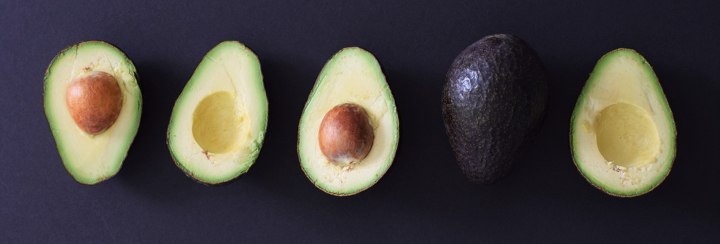
“Healthy” ≠ Low-Calorie
Many people exercise frequently and eat a lot of nutritious, whole foods and wonder why they are not able to lose weight. Often, they are simply not paying attention to how many calories they are consuming. Eating nutritious food will not work for your diet if you eat too much of it, and many foods that are packed with nutrients are also packed with calories. Just as it is possible to lose weight while not exercising and not eating nutritious food, it is also possible to gain weight or be unable to lose it while exercising regularly and eating healthy foods. This is why CICO is so important. No diet or exercise program can succeed without this crucial ingredient, and no diet will fail if CICO is followed.
Intermittent Fasting
Intermittent fasting is a bit of a dieting buzzword at the moment, but it’s a perfectly sensible approach that is completely compatible with CICO. It’s also completely optional, so if it doesn’t appeal to you, you can ignore it. One way of looking at it is that you have a choice when dieting with CICO: either eat lower-calorie meals, or eat fewer meals. If you eat fewer meals, you’ll have more time when you’re not eating, and that’s what fasting is. You already fast every night for eight hours while you sleep, and then break your fast or “breakfast” in the morning. The easiest way to apply intermittent fasting is to skip breakfast. Some people would hate to skip breakfast, and others find themselves doing it without thinking about it. I find it easy to skip breakfast, and if I skip breakfast then it is easy to skip lunch as well, as long as I have consumed nothing but zero-calorie drinks. On the other hand, if I have a small breakfast, then I will definitely be hungry at lunchtime. I like skipping meals because then I can occasionally indulge in high-calorie meals. Skipping breakfast and lunch means I can have a rich dinner and dessert.
How to Cheat Without Cheating
What if you break the rules and have a calorie-packed dessert after dinner, going over your calorie limit? The temptation is to say you failed, decide you can’t stick to your diet, and give up. You may not want to record the calories you consumed, because it feels bad to go into the red, like you lost this round of the game. If only there was a cheat code! Well, there is. If you go over the day’s calorie limit, this will happen toward the end of the day, maybe even after midnight. So “cheat” by recording those calories for the next day. You stay in the green for the day, and the next day you just have to act accordingly. Skip breakfast or have a light breakfast, but act as if you had a heavy breakfast. Have a light lunch and a light dinner. You’ll stay within your limits for both days and cheat without cheating! This is not really cheating because it really doesn’t matter if you go over the limit on a single day as long as you stay under your limit on a weekly basis.
Deconstruct Your Favorite Foods
In the CICO system, there are no foods that are off limits. You can drink soda and eat chocolate cake, as long as you stop eating when you reach your calorie limit. But staying within your limits is a lot easier if you take the time to analyze your favorite foods. Figure out where the calories are coming from, and consider low-calorie alternatives. Soda is a great example. I love having a cold, tasty, fizzy drink at hand at all times, and I could easily drink two liters of soda every day. But that’s 800 calories, which doesn’t leave many calories for food. So I switched to seltzer water flavored with a small amount of juice. Still cold, tasty, and fizzy, and I can drink as much as I want while barely affecting my calorie count. Burritos are one of my favorite foods. I love bean and cheese burritos with hot salsa. When I started counting calories, I realized that I was buying tortillas that were 200 calories each. That’s silly, because the tortilla is not the main attraction, just a neat edible food holder. So I switched to tortillas that are only 50 calories each. They’re a little smaller, so I might need two instead of one, but that’s still half the calories. Obviously cheese and meat are big calorie bombs, so those have to be treated as condiments, added for a little flavor. Beans are a nice in-between item: not exactly a low-calorie food, but very filling for the calorie count. A typical can of black beans has under 400 calories. The nice thing about salsa is that if you use fresh pico de gallo then you are basically eating raw vegetables, the healthiest and lowest-calorie food there is. But pico de gallo is delicious! So I eat burritos constantly, made with low-calorie tortillas, beans, lots of pico de gallo, and a small amount of cheese if desired.
Keeping the Weight Off
One of the biggest problems for people who jump into crash or fad diets is keeping the weight off. If dieters are thinking, “This is agony, but if I keep it up a little longer, I will get this weight loss over with and then I can relax,” it’s easy to predict that while they may reach their goal, they will likely gain weight again soon after as they “relax” and go back to their old habits, maybe making up for lost time with their junk food consumption. The CICO method is the opposite. There does not need to be any big push, or any major lifestyle change. Instead, you are becoming a more conscious eater, and making small adjustments that you can live with. When you reach your weight loss goal, nothing really changes. As a skinnier person, your calorie cap to maintain your weight will be similar to your previous limit needed to lose weight.
Learn More and Connect with Others
The best place online to learn more about CICO is the LoseIt forum on Reddit. It’s a great way to gather information and get inspired by other dieters.
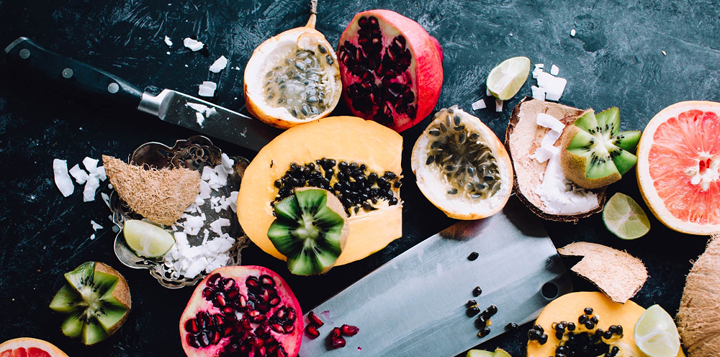
Low-Calorie Alternatives
Lots of common foods have alternatives that taste just as good with a lot fewer calories.
- Fruit should be your number one snack alternative. Always have plenty of your favorite fruit available and eat it first whenever you feel like snacking.
- Vegetables are the ideal low-calorie food and should be part of every meal. Season them with salt, vinegar and other zero-calorie seasoning. If you are having a large meal with meat or fish, vegetables, and grains or bread, just increase the amount of vegetables on your plate. Consider the meat and bread to be tasty side dishes, while you pile your plate high with veggies.
- Tortillas. Anything that goes on bread can go on a tortilla instead. Make sure you buy low-calorie tortillas, which should be about 50 calories each.
- Riced cauliflower. Rice is basically a tasteless filler. Riced cauliflower is a tasteless filler with one-tenth the calories. Season with salt and other spices and use it in any dish you would use rice in.
- Salt and vinegar. If you are used to seasoning vegetables with butter or oil, keep in mind that those are high calorie condiments. Salt and vinegar are delicious and zero calories. If you like things spicy, then salt, vinegar and a dash of cayenne pepper are the perfect seasoning combination.
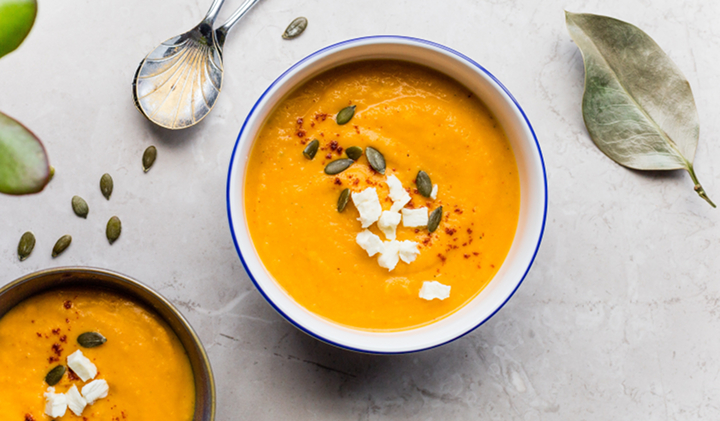
Low-Calorie Recipes
To stay on track with CICO, you will want to have a repertoire of easy low-calorie snacks and meals. Here are a few suggestions.
Zero-Calorie Drinks
Flavored Seltzer. Water is boring. Fizzy water poured over ice is more enticing. Add lemon juice and you have a tasty, refreshing drink with zero calories.
Black Coffee. If you add cream and sugar to coffee, you might as well drink soda. Learn to love black coffee: a hot (or iced), delicious, stimulating zero-calorie beverage.
100-Calorie Snacks
A Piece of Fruit. Find your favorite fruit, whether it’s apples, pears, bananas, or something more exotic, and keep a pile of them on hand at all times. Make it your go-to snack.
Applesauce Cup. A delicious, healthy snack.
Pudding Cup. Not healthy. Still delicious.
200-Calorie Snacks
Chips and Salsa
Chips: Cut up two 50-calorie tortillas and toast until crunchy.
Pico de gallo: Chop and mix:
- 1 tomato
- 1/2 onion
- 1 small jalapeño pepper
- 1/2 bunch cilantro
- 1 tablespoon minced garlic
- salt and lemon juice to taste.
Tuna Salad
Chop and mix:
- One can of tuna in water
- 1/2 onion
- 1 small jalapeño pepper
- 10 green olives
- salt, pepper, red wine vinegar and cayenne pepper to taste.
Mixed Vegetables
Steam 10 to 12 ounces of mixed vegetables. Season with salt, pepper, red wine vinegar and cayenne pepper to taste.
400 Calorie Meals
Breakfast Burritos
Mix these ingredients for a Denver omelette:
- 2 eggs
- 1/4 onion
- 1/2 green pepper
- salt and pepper
- a small amount of ham and/or cheese.
Fry the omelette with cooking spray instead of butter. Cut it in half and roll it up in two low-calorie tortillas.
Banana and Peanut Butter Wraps
Peanut butter is a high-calorie food, so control your portions carefully. For each of two wraps, use:
- 1 50-calorie tortilla
- 1/2 banana
- 1 tablespoon peanut butter
Entrée with Two Sides
Chicken or fish: Marinate one chicken breast or one fish fillet with lemon juice, salt and pepper, and rosemary. Place the chicken or fish in a glass dish coated with cooking spray, and pour the marinade over it. Bake at 400 degrees for about 20 minutes.
Wild rice: Cook 1/4 cup dry wild rice according to package instructions and season to your taste.
Steamed vegetables: Steam three cups of broccoli, carrots and cauliflower. Season with salt and pepper and balsamic vinegar.